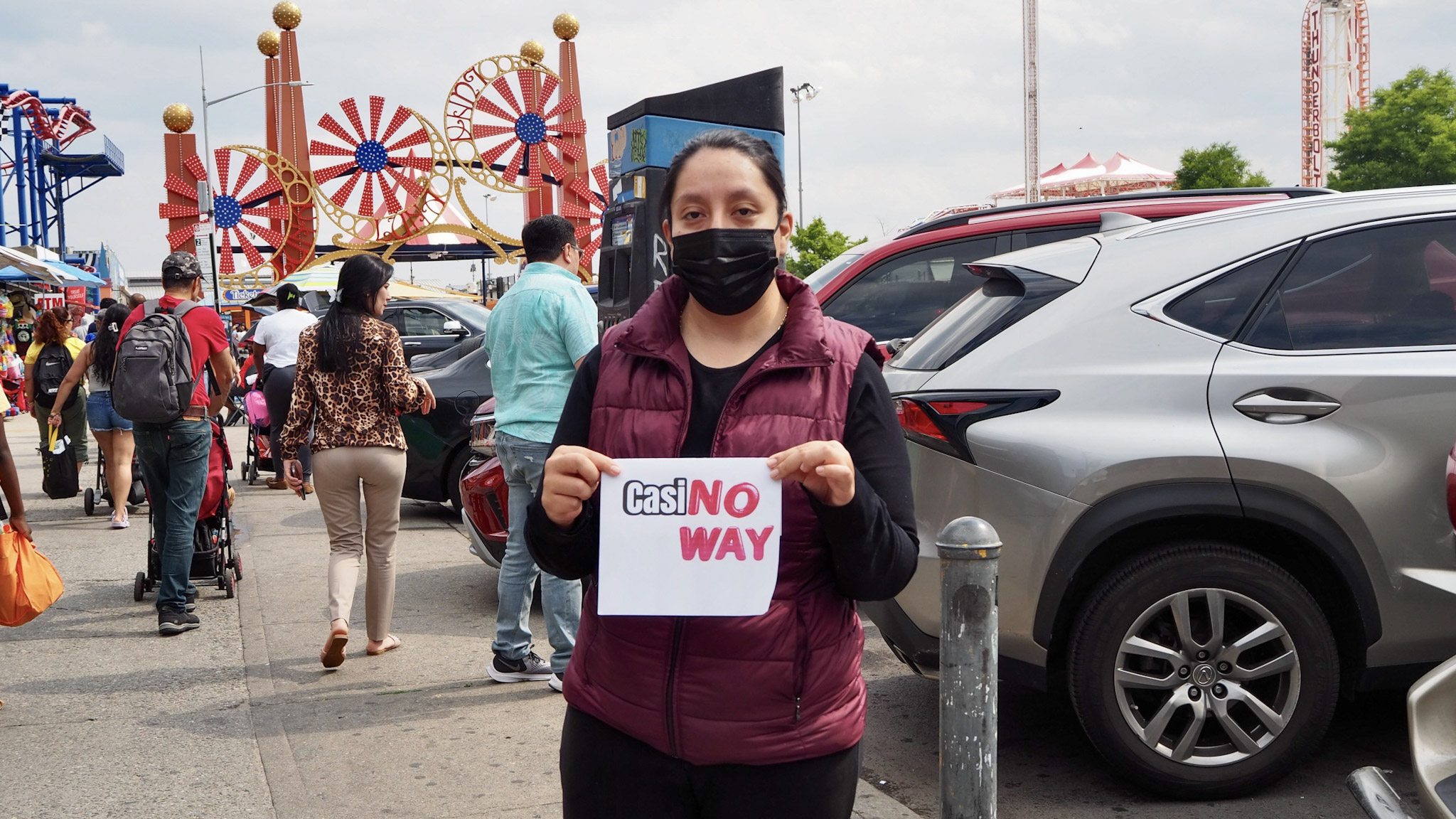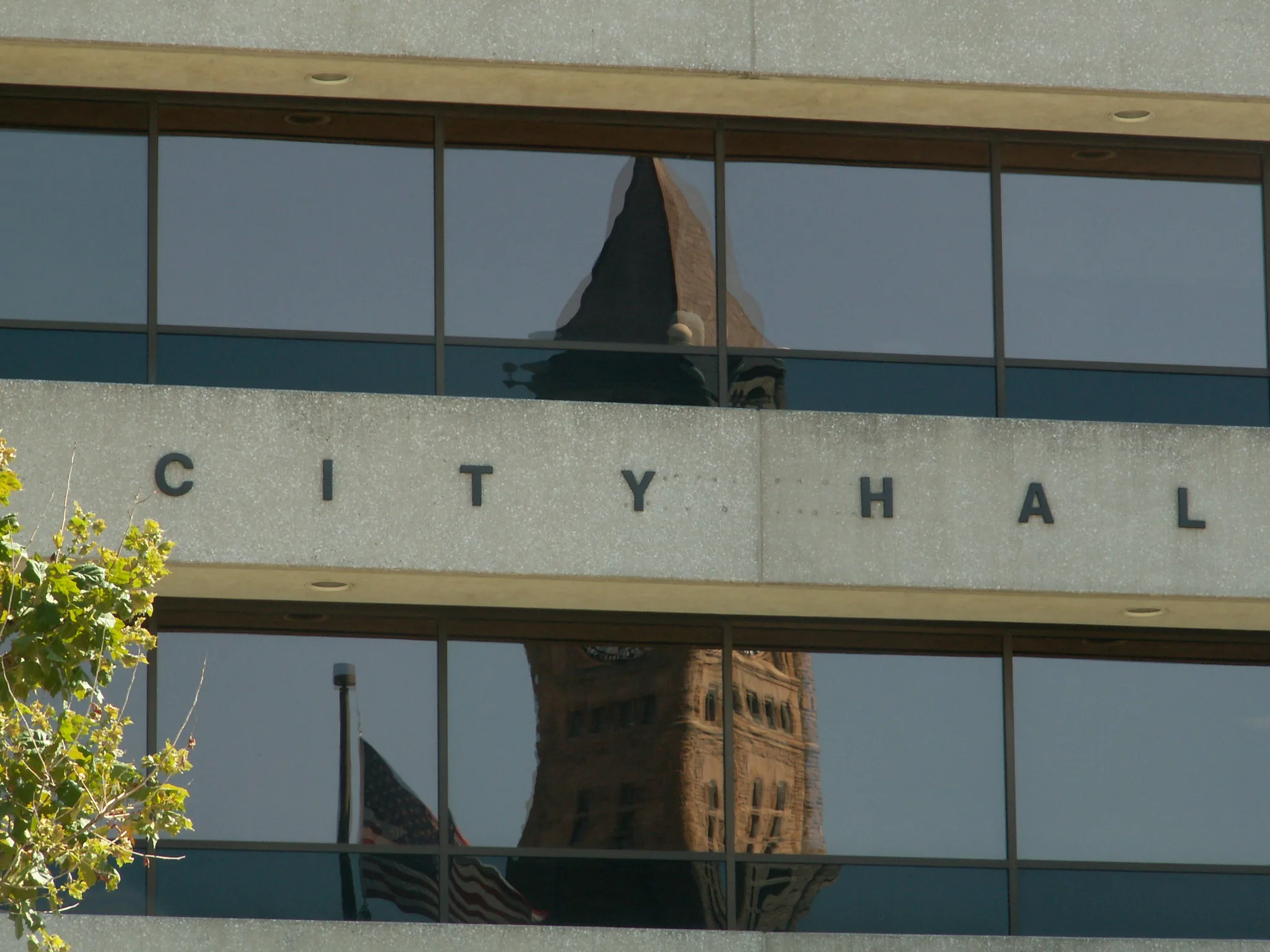Inside a small taco stand located in the heart of the Coney Island amusement district, a small but vocal group of community members gathered over a platter of tacos al pastor, to discuss how a proposed casino would affect their lives.
Also Read: Immigrant Residents in Queens Say a Casino Will Harm Their Communities
“They will push us out and push local business out,” Jenny Hernandez, 30, said at the event. She has lived in Coney Island since she immigrated with her family from Mexico when she was a child. To her, a casino would destroy everything that she loves about her neighborhood.
“I love Coney Island and what I love the most about it is the diversity of nationalities that is here. I want it to stay that way and I want my kids to see all the nationalities.”
As the City wrestles with the possibility of opening the first-ever legally operated full-service casino within the five boroughs, two of the proposed sites are in the heart of working-class neighborhoods with large populations of immigrants. In Flushing, Steve Cohen, the billionaire owner of the Mets, is courting residents with “visioning” sessions that promise community members vast economic opportunities. Some residents in Queens have organized to oppose the project fearing that a casino would do more harm than good.
Likewise in Coney Island, the developers and their supporters argue that the casino will be an economic boom for the community and will rejuvenate the iconic but aging boardwalk. However, a growing number of community members are pushing back, arguing that a casino would usher in a wave of gentrification that also destroys Coney Islands’ unique character.
Over the past few years Coney Island’s skyline, once dominated by roller coasters, the Wonder Wheel, and the Parachute Jump tower, has seen the addition of several luxury high-rise apartment towers. Fearing a casino would only accelerate the pace of redevelopment, Hernandez decided to work with the United Front Against Displacement, an organization fighting public housing privation on Coney Island, to try to stop the casino effort.
“We have seen all these high rises coming up in the community and that means gentrification is coming, but after I heard about the casino I said we have to do something about it,” she said.
Hernandez is not alone in her opposition to the casino. In April, Coney Island’s Community Board 13 voted 23-8 against the casino project, citing concerns about a rise in crime and increased traffic congestion. Although community board ratings are only advisory and don’t have the power to kill the casino proposal, it is a bellwether of the community’s lack of enthusiasm for the project.
Angela Kravtchenko, a Ukrainian-born community activist, and member of Community Board 13 voted against the project because she believes the casino is more trouble than it’s worth.
“A casino won’t bring anything meaningful to our community, it only brings problems,” she said. “Do we want economic development? Sure we do, but there are so many other ways to achieve it.”
Councilmember Ari Kagan, whose district includes Coney Island, is opposed to the casino plan as well.
“CM Kagan strongly and publicly opposes this project in Coney Island,” said Jeannine Cherichetti, his chief of staff.
According to Cherichetti, the Councilmember believes that the project would endanger public safety by increasing crime, increasing congestion, and causing mental health and gambling problems.
Fears of an increase in gambling addiction and crime are not entirely unfounded. Although the connection between casinos and a rise in street crime is heavily debated, a 2006 study in The Review of Economics and Statistics found that over time casinos increased all crimes except murder. The study also found that casinos increased gambling addiction.
Developers bet big on citywide support
Despite the local opposition, the consortium of developers, which includes real estate giant Thor Equities, Saratoga Casino Holdings, the Chickasaw Nation, and Legends Hospitality, has made a great effort to build local support for the massive project that has been dubbed ‘The Coney.” They have portrayed the $3 billion project as a potential economic engine for all of South Brooklyn that could generate 2,500 jobs with wages of up to $30 an hour.
The developers have also hired political consulting firm Red Horse Strategies to help with public relations. Red Horse has deep ties to Mayor Adams, with one of the firm’s partners, Katie Moore, served as his Campaign Manager as well as the Executive Director of his transition team.
Thor Equities directed all questions to former Councilmember Robert Cornegy Jr., who represented Bedford-Stuyvesant and Crown Heights for 8 years. He was hired as a consultant by the developer in February.
Since being hired by the developers, Cornegy has led a team knocking on more than 16,300 doors and meeting people on the street to gather support for the project. Cornegy claims that he has collected 4,000 signatures in support of the casino. When asked if he is leveraging his past experience as a public servant for the benefit of private developers, Cornegy framed his support for the casino in altruistic terms.
“My presence on this project is born out of my desire to continue doing the type of work I did when I was on the council as the chair of the small business and housing and buildings committees,” he said. “As a city, and more specifically in South Brooklyn, we must commit to an economic development agenda that is focused on creating large amounts of jobs and opportunities for all communities.”
Additionally, Cornegy insisted that the project would create thousands of good-paying union jobs, would deliver millions of dollars worth of infrastructure, and improve public safety. He also stressed that the project would be built with private funds and not displace a single unit of housing. Regarding the community board’s opposition to the project, Cornegy dismissed it.
“Those efforts in talking to people directly are more significant than a preliminary non-binding vote by a divided community board who admitted they were making a decision on the project before the application was even finished,” he said. “They have charged that we would be paying our employees too much for them to qualify for public housing subsidies. We see it differently. We see the careers created by this project as a pathway to the middle class for people living in an area that is already experiencing high unemployment.”
Bureaucratic hurdles
However, before the project can move forward it has to overcome several major hurdles. Currently, there are 11 casino proposals vying for just three coveted downstate casino licenses that the state has authorized. A convoluted web of governing bodies is overseeing the process and they will ultimately decide which proposal will be awarded a license. Ultimately, the New York State Gaming Commission will have the final say on whether a casino license will be issued, but before it even gets to that stage, the application first has to come under the review of the New York Gaming Facility Location Board which reports directly to Governor Hochul.
The Board has the power to establish the licensing fees as well as the power to investigate every proposal. It will then select three candidates that will go before the gaming commission for final approval. Yet after a proposal is formally submitted to the board, the proposal has to first be approved by a Community Advisory Committee (CAC).
In New York City, the CAC would be set up in each district in which a casino is proposed to be built and would be made up of six members representing the governor, the mayor, the borough president, the local state senator, the local state assembly member, and the local council member. Coney Island’s CAC vote is scheduled for October. CAC’s are required to hold public hearings and would need at least four votes to approve the project.
If that’s not complicated enough, one other major hurdle is the fact New York City zoning laws currently do not allow for casinos. Even if a project is awarded a license, there’s no guarantee that it would be approved through the city’s nearly year-long Uniform Land Use Review Procedure (ULURP).
According to Charles Kretchmer Lutvak, Mayor Adams’s Deputy Press Secretary, the mayor has not expressed a preference for any particular casino project. Regarding the potential obstacle the City’s current zoning laws pose for a potential casino, Lutvak pointed toward the mayor’s City of Yes for Economic Opportunity zoning proposal which would modify the city’s zoning law, making it easier for a project like a casino to be built.
The current proposal to build a casino on Coney Island is not the first time developers had attempted to “revitalize” the boardwalk. In the late 1970s, developers eager to emulate Atlantic City, pushed for casino gambling on Coney Island. Anticipating a financial windfall, land speculation caused boardwalk real estate properties to rise from $3 to $100 per square foot.
Despite the backing of then-Mayor Ed Koch, the efforts were partly killed by Donald Trump who wanted to protect his gambling enterprises in Atlantic City.
Now, to Jenny Hernandez, the current proposal feels like déjà vu. As a lifelong resident of Coney Island, she wants to see a future where the community takes the lead in shaping where they live.
“Why do people who don’t live in Coney Island have a say on what happens in Coney Island?”















